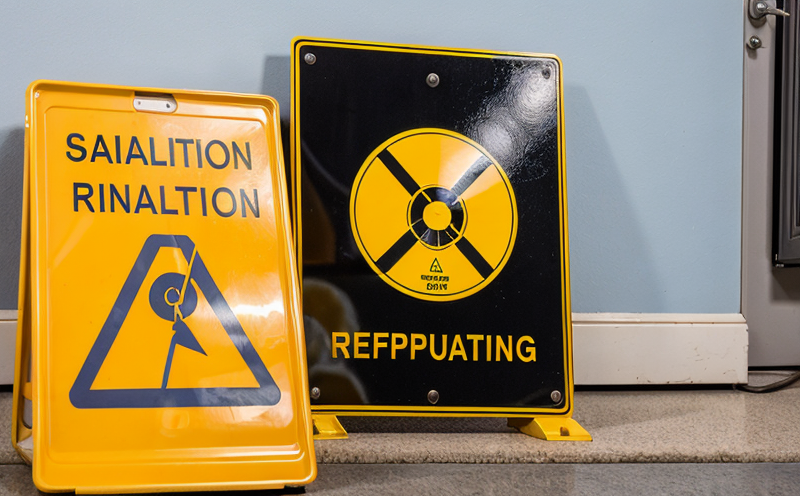ISO 18589-1 Soil Sampling for Environmental Safety Compliance
The ISO 18589 series of standards provides a comprehensive framework for the sampling and analysis of environmental soil, solid waste, and water. Specifically, ISO 18589-1:2017, which is focused on soil sampling, establishes guidelines to ensure that samples are representative and can be analyzed reliably in accordance with other parts of the ISO 18589 series.
The standard's primary aim is to provide a robust foundation for environmental safety compliance testing. This includes ensuring that all sampling methods are consistent across different organizations and jurisdictions, thereby facilitating accurate and comparable data collection.
Environmental soil sampling is crucial in various sectors such as construction, mining, agriculture, and waste management. Regulatory bodies like the U.S. Environmental Protection Agency (EPA), European Commission, and other national standards bodies often require compliance with this standard to ensure that environmental practices are safe and sustainable.
The process of soil sampling involves several critical steps, including site selection, field preparation, sample collection, and preservation. Each step must be meticulously followed to maintain the integrity of the sample. The ISO 18589-1 guidelines outline these procedures in detail, ensuring that the samples taken are representative of the area being tested.
One key aspect is the use of appropriate sampling tools and techniques. For instance, augers or shovels may be used depending on the depth and type of soil. The standard specifies the equipment needed to ensure that the sample is not contaminated during collection. Additionally, proper preservation methods are essential to prevent changes in the chemical composition or physical state of the soil.
The standard also emphasizes the importance of documentation. Detailed records must be kept for each sampling event, including location coordinates, depth of sampling, and any relevant environmental conditions. This information is vital for ensuring that the sample can be accurately reproduced if needed.
Sampling variability is a significant challenge in soil testing. ISO 18589-1 addresses this by providing standardized procedures that minimize such variability. By adhering to these guidelines, laboratories and field teams can ensure that their samples are as consistent as possible, leading to more reliable test results.
The standard's impact extends beyond just the sampling process; it also influences how soil samples are handled in subsequent analyses. By ensuring that the initial sample is representative, ISO 18589-1 helps to reduce errors and inconsistencies in later testing stages. This not only improves the accuracy of environmental assessments but also enhances overall compliance with relevant regulations.
In summary, the implementation of ISO 18589-1 is essential for maintaining high standards of environmental safety compliance. It provides a structured approach that ensures reliable soil sampling practices, which are critical for accurate and consistent environmental testing.
Applied Standards
The ISO 18589-1 standard is part of the broader ISO 18589 series, which encompasses various aspects of soil sampling, solid waste analysis, and water quality assessment. The specific application of these standards ensures that environmental safety compliance testing is conducted in a standardized manner.
The following are some key applied standards within this series:
- ISO 18589-2:2017 - Sampling and Analysis of Solid Waste
- ISO 18589-3:2017 - Water Quality Sampling Procedures
- ISO 18589-4:2017 - Groundwater Sampling
The standards are designed to work together, providing a cohesive approach to environmental sampling and analysis. This ensures that all aspects of the testing process are consistent and reliable.
To further enhance compliance with international regulations, ISO 18589-1 is aligned with other relevant global standards such as:
- ASTM D2709
- EN 13664
- IEC 62262
The alignment with these international standards ensures that the testing methods used are compatible with global practices, thereby facilitating seamless collaboration and data exchange.
In conclusion, ISO 18589-1 is an integral part of a comprehensive suite of environmental sampling standards. Its application in conjunction with other parts of the series provides a robust framework for ensuring environmental safety compliance.
Industry Applications
- Construction: Soil sampling is essential before and during construction projects to ensure that the foundation is safe and secure. ISO 18589-1 helps in identifying any potential risks associated with the soil, such as contamination or unstable conditions.
- Mining: In mining operations, soil sampling plays a critical role in assessing the environmental impact of extraction activities. It ensures that the site is safe for both workers and the surrounding ecosystem.
- Agriculture: Soil testing helps farmers make informed decisions about fertilization and crop rotation, ensuring sustainable agricultural practices.
- Waste Management: Proper soil sampling aids in the effective management of waste sites, helping to identify hazardous materials that require special handling.
The standard's application across these industries underscores its importance in maintaining environmental safety and compliance. By providing a standardized approach to soil sampling, ISO 18589-1 ensures that all sectors can adhere to the same high standards of practice.
Customer Impact and Satisfaction
- Regulatory Compliance: Adhering to ISO 18589-1 ensures that customers meet all necessary regulatory requirements, thereby avoiding penalties and fines.
- Environmental Safety: The use of this standard guarantees that soil samples are representative and accurately reflect the environmental conditions, leading to more effective remediation efforts.
- Data Accuracy: Standardized sampling methods lead to precise and reliable test results, enhancing customer confidence in the data provided.
- Cost Efficiency: By minimizing errors and ensuring consistent results, ISO 18589-1 helps customers achieve cost savings through reduced retesting and remediation efforts.
Clients benefit from the implementation of ISO 18589-1 by gaining a competitive edge in their respective industries. The standard's emphasis on accuracy, consistency, and compliance ensures that they are well-positioned to meet future challenges and opportunities.





